New weapons, state-of-the-art equipment and first-class instruction - the Russian Army is literally rolling out innovative guns to compete in the global military elite. In 2008, the Kremlin launched a program to completely renovate Russia's military strength. In this context, investments of more than 700 billion euros are intended to restore the previously ailing troops to their original splendor.
Latest Thread
You are using an out of date browser. It may not display this or other websites correctly.
You should upgrade or use an alternative browser.
You should upgrade or use an alternative browser.
- Thread starter Ghost soldier
- Start date
I stopped watching at 0:17 when one of the bombs failed to explode 
The russians are a joke. We have seen their equipment fail again and again no matter who the operator was. No amount of propaganda or makeup can make these vodka addicted loners look modern.
The russians are a joke. We have seen their equipment fail again and again no matter who the operator was. No amount of propaganda or makeup can make these vodka addicted loners look modern.
The problem with the Russian modernization is that its become far to expensive to properly go through with it. Much of their project have been delayed and post-poned for this very reason. I think much of their modernization will be much more gradual in the coming decades. There are already project being flatout cancelled or shelled.
Last edited:
Reviewbrah
Contributor
Russians love to exaggerate the capabilities of their weapons.

Russia's Zubr-class LCAC Practice Amphibious Assault in Baltic Sea - Naval News
The Baltic Fleet’s Yevgeny Kocheshkov and Mordovia air-cushion small amphibious assault ships (Zubr-class, Project 1232.2, NATO reporting name: Pomornik-class) have practiced amphibious landing during a planned exercise in the Kaliningrad Region in west Russia, the Defense Ministry’s press...
The Baltic Fleet’s Yevgeny Kocheshkov and Mordovia air-cushion small amphibious assault ships (Zubr-class, Project 1232.2, NATO reporting name: Pomornik-class) have practiced amphibious landing during a planned exercise in the Kaliningrad Region in west Russia, the Defense Ministry’s press office said.
(More at link)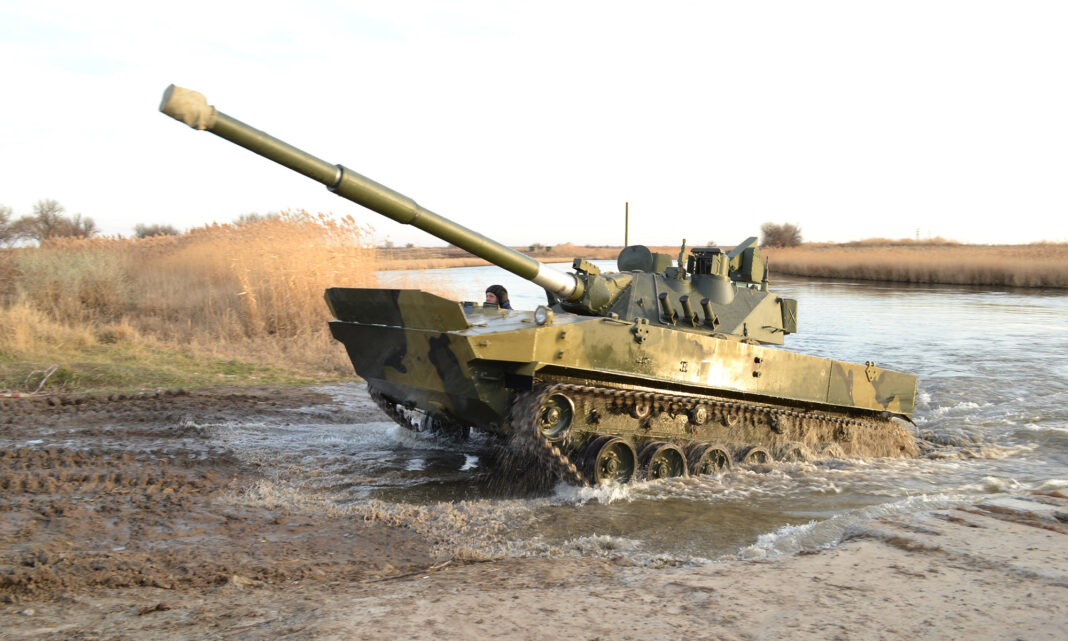
Russia’s SPRUT-SDM1 light amphibious tank has successfully completed another phase in a series of state tests which began in August 2020 and will last a year and a half.
According to the RIA Novosti news agency, which quotes Bekkhan Ozdoev, industrial director of the cluster of weapons at the Rostec state corporation, the Russian Ministry of Defence has been conducting state tests to validate tank’s laid in operational characteristics in sea and high mountain regions, in different climate zones, at air temperatures ranging from -40 to +40
The latest stage of state tests of the light amphibious tank the SPRUT-SDM1 was held in the Black Sea and recognised as a success, according to the press service of Rostec. The tank proved the ability to overcome water obstacles in rough seas of up to Sea State 3 and carry out targeted fire afloat by its main gun in limited traverse range and easily go to an unprepared shore. The next stage of state tests, which will begin at the beginning of next year, will be testing the SPRUT-SDM1 in extremely low temperatures.
The 2S25M SPRUT-SDM1 was developed by Volgograd machine-building company and Kurganmashzavod of the High Precision Weapons Holding. It is a modernised version of the previous SPRUD-SD. The new model is unified with the chassis of the new BMD-4M airborne combat vehicle.
SPRUT Features
The SPRUT-SDM1 has the firepower of a modern Main Battle Tank (MBT) and experts consider it comparable to that of Russian T-72 and T-90 series vehicles. It is armed with a fully-stabilised 2A75M 125 mm smoothbore gun to fire ammunition at maximum range of 2-2.5 km. It can also launch anti-tank guided missiles at a range of up to 5 km and can also target low-flying helicopters. In order to accommodate an MBT gun on a comparatively small and light chassis, the SPRUT is equipped with suspension that can be raised and lowered by the driver.This combat vehicle was specially designed for the Russian Airborne Forces but can be also used by naval infantry units because it weighs just 18 t. Excellent mobility is facilitated in part by extensive use of aluminium in the SPRUT’s hull. The tank is air-portable and can be paradropped (carrying the crew) with the Il-76 cargo aircraft able to carry two examples. The SPRUT is operated by a crew of three, commander, gunner and driver and.
Currently, Russia is the only country in the world to operate airborne tanks. At a time when the Indian Army is seeking light tanks, SPRUT has potential to meet the requirements. According to Indian media, New Delhi is already in talks with Russia’s official arms exporter – Rosoboronexport.
Yury Laskin
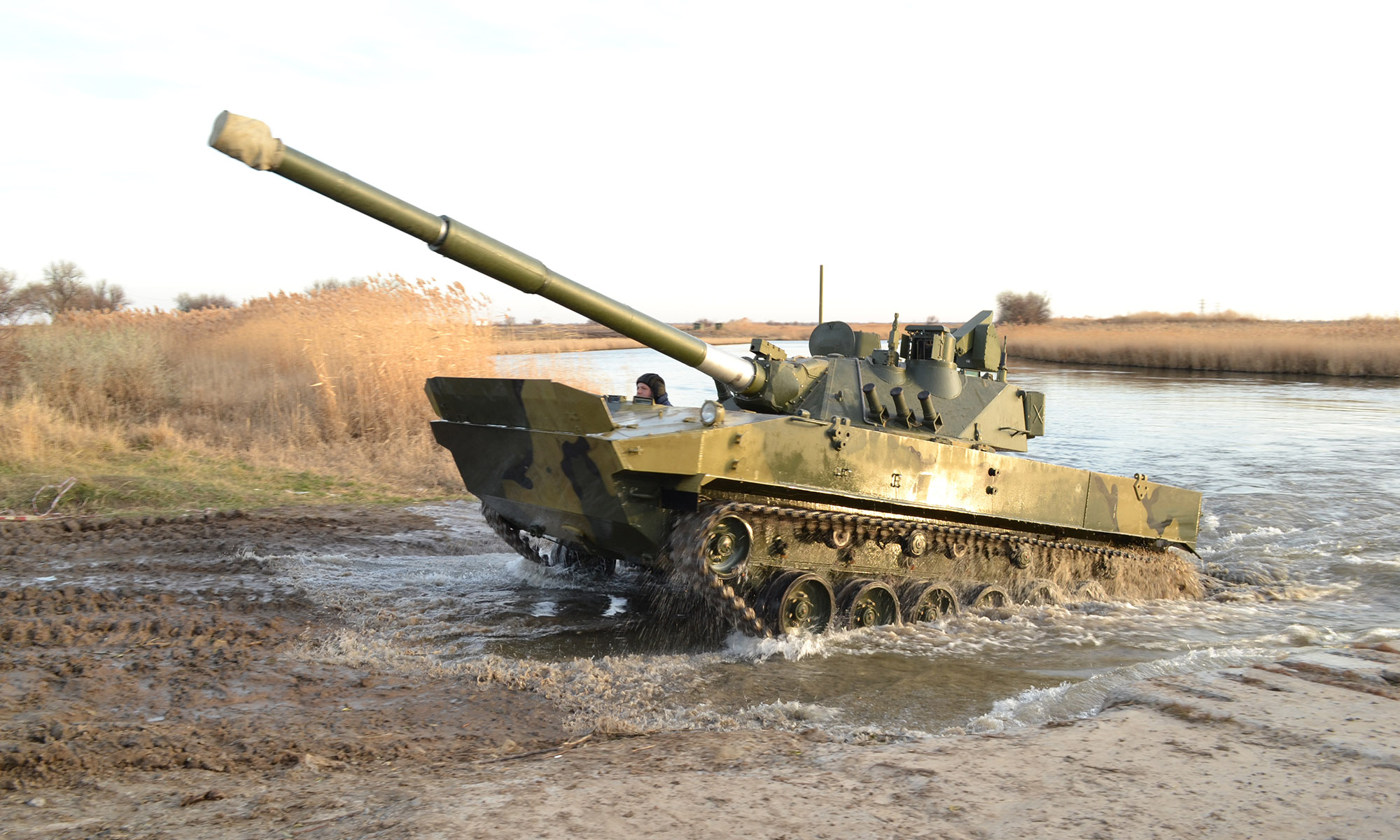
Latest SPRUT Tests Completed - European Security & Defence
Russian media has reported that the latest trials of the SPRUT light amphibious tank have been completed as India considers purchasing the type.
 euro-sd.com
euro-sd.com
Russian Deputy Defense Minister Alexei Krivoruchko has visited the Ulan-Ude Aircraft Plant, a subsidiary of the Russian Helicopters Group. Krivoruchko checked the production of the Kamov Ka-226T (NATO reporting name: Hoodlum) helicopter, various versions of the Mil Mi-8 (Hip), and the new Mi-8AMTSh-VN helicopter.

Mil Mi-8AMTSh-VN (Picture source: Air Recognition)
The delivery of the Mi-8AMTSh-VN helicopter to the Russian armed forces is planned to begin in 2021. A helicopter prototype is currently being tested at the Mil and Kamov National Helicopter Center. “The Ulan-Ude Aircraft Plant has proved itself as a reliable supplier of the Russian Defense Ministry. The plant is fulfilling its commitments under the state defense procurement program ahead of schedule,” the Russian deputy defense minister said.
According to him, the enterprise produces military hardware, the quality of which has been checked in real combat : “As for the Mi-8AMTSh-VN helicopter, we plan to conclude further contracts for this series. We will start to receive them in the imminent future. The delivery will begin next year,” Krivoruchko said. “In 2021, the first 10 Mi-8AMTSh-VN helicopters will be delivered to units, including army aviation brigades operating in the interests of the Airborne Force,” he added.
The Mi-8AMTSh-VN is designed for special operations. During the Army 2019 forum, a contract was signed with the Russian Defense Ministry for the supply of 10 Mi-8AMTSh-VN helicopters.
The Mi-8AMTSh-VN can accomplish a wide range of tasks during special missions, from aerial delivery to fire support. The design of the modernized Mi-8AMTSh-VN helicopter was worked out on the basis of combat experience.
The helicopter is equipped with higher-power engines. The basis of the new flight structure is a propeller with composite blades with a new airfoil. This makes it possible to increase maneuverability, flight speed and thrust-to-weight ratio, obtain new characteristics when operating in harsh climatic conditions. The Mi-8AMTSh-VN is equipped with a more efficient X-type tail rotor.
The Mi-8AMTSh-VN features increased combat survivability and protection, which are provided by an onboard defensive aids suite and titanium alloy armor covering the cockpit and vital units. The cargo compartment is covered by lightweight aramid armor. Two sliding doors on the sides and additional hatches allow quick disembarkation. In addition, the helicopter has better armament.
In July 2020, the Russian Helicopters Group started flight tests of the Mi-8AMTSh-VN rotorcraft to assess the aerodynamic and flight performance, maneuverability, stability and controllability, as well as the reliability and efficiency of the weapons and protection means

 www.airrecognition.com
www.airrecognition.com

Mil Mi-8AMTSh-VN (Picture source: Air Recognition)
The delivery of the Mi-8AMTSh-VN helicopter to the Russian armed forces is planned to begin in 2021. A helicopter prototype is currently being tested at the Mil and Kamov National Helicopter Center. “The Ulan-Ude Aircraft Plant has proved itself as a reliable supplier of the Russian Defense Ministry. The plant is fulfilling its commitments under the state defense procurement program ahead of schedule,” the Russian deputy defense minister said.
According to him, the enterprise produces military hardware, the quality of which has been checked in real combat : “As for the Mi-8AMTSh-VN helicopter, we plan to conclude further contracts for this series. We will start to receive them in the imminent future. The delivery will begin next year,” Krivoruchko said. “In 2021, the first 10 Mi-8AMTSh-VN helicopters will be delivered to units, including army aviation brigades operating in the interests of the Airborne Force,” he added.
The Mi-8AMTSh-VN is designed for special operations. During the Army 2019 forum, a contract was signed with the Russian Defense Ministry for the supply of 10 Mi-8AMTSh-VN helicopters.
The Mi-8AMTSh-VN can accomplish a wide range of tasks during special missions, from aerial delivery to fire support. The design of the modernized Mi-8AMTSh-VN helicopter was worked out on the basis of combat experience.
The helicopter is equipped with higher-power engines. The basis of the new flight structure is a propeller with composite blades with a new airfoil. This makes it possible to increase maneuverability, flight speed and thrust-to-weight ratio, obtain new characteristics when operating in harsh climatic conditions. The Mi-8AMTSh-VN is equipped with a more efficient X-type tail rotor.
The Mi-8AMTSh-VN features increased combat survivability and protection, which are provided by an onboard defensive aids suite and titanium alloy armor covering the cockpit and vital units. The cargo compartment is covered by lightweight aramid armor. Two sliding doors on the sides and additional hatches allow quick disembarkation. In addition, the helicopter has better armament.
In July 2020, the Russian Helicopters Group started flight tests of the Mi-8AMTSh-VN rotorcraft to assess the aerodynamic and flight performance, maneuverability, stability and controllability, as well as the reliability and efficiency of the weapons and protection means

Russian armed forces to receive 10 Mi-8AMTSh-VN helicopters in 2021
Russian Deputy Defense Minister Alexei Krivoruchko has visited the Ulan-Ude Aircraft Plant, a subsidiary of the Russian Helicopters Group. Krivoruchko chec
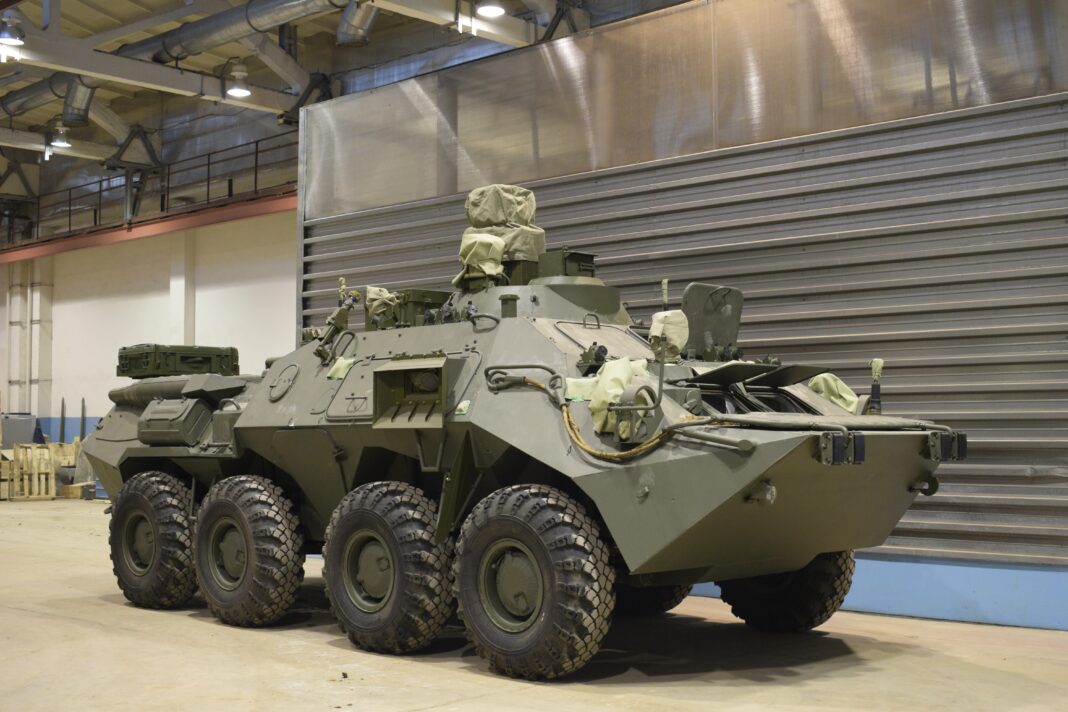
The first batch of the new automated fire control systems for artillery units, designated 1В181 or 1В198 being based on either the Ural 6×6 truck or BTR-80 APC, have been delivered. Although the exact number was not disclosed, the Russian media quoted Vladimir Pimenov, CEO of manufacturer VNII Signal, who claimed that, “the shipment was made in full and on time according to the long-term contract”.
The new system is a further derivative of the KAPUSTNIK (SKIT) 1B152 automated fire control vehicle which is widely used in the Russian Army and marketed by Rosoboronexport. The national TsAMTO states that four vehicles were delivered to Venezuela in 2011. According to the manufacturer, 1В181 and 1В198 provide automated control of fire and manoeuvre for an artillery division (battalion) consisting of up to four batteries (or up to eight guns in a battery of either towed guns or self-propelled howitzers of the MSTA- family).
The manufacturer claims that the 1В181 and 1В198 can increase the accuracy of conventional shells by 25 to 30 per cent. The greatest efficiency of the combat use of the 1B181 and 1B198 complexes is achieved when controlling self-propelled guns and MLRS combat vehicles equipped with Automated Control and Guidance Systems (ASUNO).
VNII Signal is also responsible for the PLANSHET-A portable automated artillery fire control system which was released to public at the Army-2020 International Forum this August and is likely to get an export version shortly.
Yury Laskin
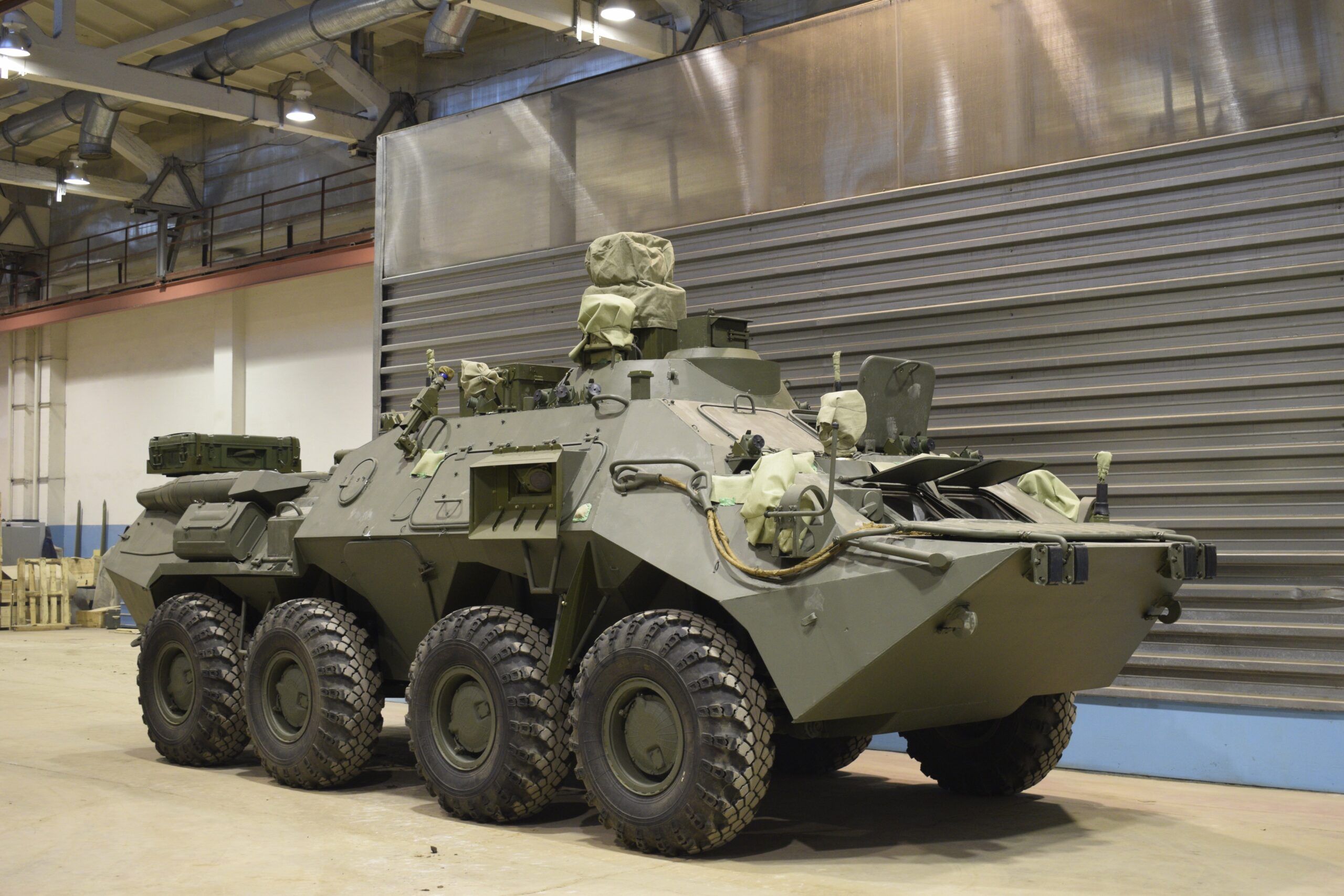
Russian Artillery Becomes Smarter - European Security & Defence
Russian Artillery capabilities are set to become smarter as VNII Signal delivers its 1В181 & 1В198 automation systems, with exports likely to follow.
 euro-sd.com
euro-sd.com
A relatively rare and heavily customized Ural-432007-0111-31 6-ton truck, allegedly owned by a Russian state-sponsored private military contractor Wagner, was spotted near the Bangui, Central African Republic.
The special truck, better known as Wagner-wagon, uses by fighters from the Wagner Group PMC (private military company), Russian state-sponsored private military contractors carrying out deadly force in the region.
Wagner is a secretive contractor whose soldiers of fortune played a role in Syria, Libya, Sudan and eastern Ukraine. This private military company linked to Yevgeny Prigozhin. Prigozhin is a Russian businessman indicted in the United States for meddling in the 2016 U.S. presidential election. Wagner deployed hundreds of contractors to conflict zones and is a cover for the use of Russian regular troops.
The New York Times describes Wanger company as really an arms-length unit of the Russian Ministry of Defence or Russia’s military intelligence service in disguise, which is used by the Russian government in conflicts where deniability is called for, as its forces are trained on Ministry of Defense installations.
As to the Wagner-wagon, this combat vehicle also was previously seen during conflicts in Syria and Libya. It is a Russian multi-functional, modular, armoured, mine resistant MRAP vehicle developed by Yevgeny Prigozhin’s Evro Polis company.
Wagner-wagon in RussiaWagner-wagon in SyriaWagner-wagon in Libya
Therefore, this vehicle is arguably the best proof that Wagner fighters are operating in the troubled Central African Republic.

Wagner-wagon spotted in troubled Central African Republic
A relatively rare and heavily customized Ural-432007-0111-31 6-ton truck, allegedly owned by a Russian state-sponsored private military contractor Wagner, was spotted near the Bangui, Central African Republic. The special truck, better known as Wagner-wagon, uses by fighters from the Wagner...
Russian Armed Forces are set to receive additional 2S35 Koalitsiya-SV self-propelled howitzers, according to the press office of the Western Military District.
The armored units of the Taman Motor Rifle Division of the Guards Tank Army will receive 18 2S35 Koalitsiya-SV self-propelled combat artillery vehicles.
The new Russian 152mm self-propelled howitzer is designated to destroy a potential enemy’s command posts, communications centers, artillery and mortar batteries, the armor, including tanks, anti-tank weapons, air and ballistic missile defense systems and troops.
- ADVERTISEMENT - CONTINUE READING BELOW -
The Artillery system is based on the T-90 tank platform.
The Koalitsiya-SV is armed with a 152mm gun with a rate of fire of over 10 rounds per minute, which is higher than the speed of other artillery systems. This rate of fire is ensured by the special design of the gun-loading mechanism or autoloader. The howitzer’s weapon suite also includes a remotely-controlled station with a Kord machine-gun.
Russian modern artillery system has been in some level of service since 2016.

Russian Army to receive more 2S35 Koalitsiya-SV self-propelled howitzers
Russian Armed Forces are set to receive additional 2S35 Koalitsiya-SV self-propelled howitzers, according to the press office of the Western Military District. The armored units of the Taman Motor Rifle Division of the Guards Tank Army will receive 18 2S35 Koalitsiya-SV self-propelled combat...
The Russian Ministry of Defence (MoD) received some 2,700 major weapon systems and 52,500 support systems in 2020, Deputy Defence Minister Alexey Krivoruchko told the...
The Russian Ministry of Defence (MoD) received some 2,700 major weapon systems and 52,500 support systems in 2020, Deputy Defence Minister Alexey Krivoruchko told the ministry’s Krasnaya Zvezda (Red Star) newspaper on 30 December.
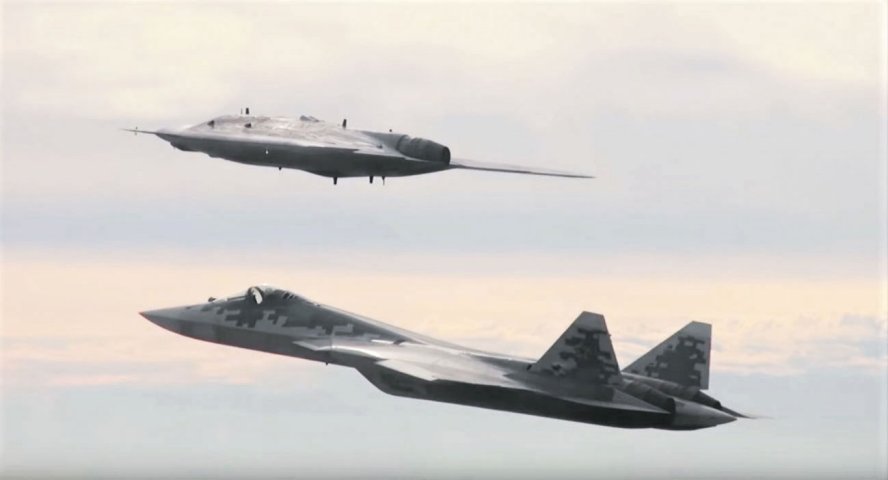
Russia’s stealthy Okhotnik heavy UAV conducting a manned/unmanned teaming test flight with an Su-57 fighter. In 2020 the Russian MoD gave priority to unmanned aviation and received its first serial production Su-57. (Russian MoD)
“The troops received 147 aircraft, the first reconnaissance and strike unmanned aerial systems [UASs] with Inokhodets [Pacing Horse] and Forpost [Outpost] unmanned aerial vehicles [UAVs], seven surface ships and two submarines, more than 1,500 land platforms, some 300 missile and artillery systems, and approximately 150 air defence weapons,” said Krivoruchko.
The military will also receive 94 fixed- and rotary-wing aircraft, including 22 Su-57 multirole combat aircraft, ahead of schedule through 2024.
In 2022 the MoD is planning to complete the development of the T-14 Armata main battle tank, T-15 Armata, B-11 Kurganets-25, and K-17 Bumerang infantry fighting vehicles, B-10 Kurganets-25 and K-16 Bumerang armoured personnel carriers, the T-16 armoured recovery vehicle, the Koalitsiya-SV 152 mm self-propelled howitzer, and a number of advanced combat stations for tracked and wheeled combat platforms, according to Krivoruchko. “We are planning to complete trials of the S-500 air defence system and to adopt it and to accept the Voronezh very-high-frequency radar into service,” he said.
The deputy minister reported that pop-up tests have already been conducted with the new Sarmat intercontinental ballistic missile, adding, “We will soon begin flight trials of this system.”
The Russian Ministry of Defence (MoD) received some 2,700 major weapon systems and 52,500 support systems in 2020, Deputy Defence Minister Alexey Krivoruchko told the ministry’s Krasnaya Zvezda (Red Star) newspaper on 30 December.

Russia’s stealthy Okhotnik heavy UAV conducting a manned/unmanned teaming test flight with an Su-57 fighter. In 2020 the Russian MoD gave priority to unmanned aviation and received its first serial production Su-57. (Russian MoD)
“The troops received 147 aircraft, the first reconnaissance and strike unmanned aerial systems [UASs] with Inokhodets [Pacing Horse] and Forpost [Outpost] unmanned aerial vehicles [UAVs], seven surface ships and two submarines, more than 1,500 land platforms, some 300 missile and artillery systems, and approximately 150 air defence weapons,” said Krivoruchko.
The military will also receive 94 fixed- and rotary-wing aircraft, including 22 Su-57 multirole combat aircraft, ahead of schedule through 2024.
In 2022 the MoD is planning to complete the development of the T-14 Armata main battle tank, T-15 Armata, B-11 Kurganets-25, and K-17 Bumerang infantry fighting vehicles, B-10 Kurganets-25 and K-16 Bumerang armoured personnel carriers, the T-16 armoured recovery vehicle, the Koalitsiya-SV 152 mm self-propelled howitzer, and a number of advanced combat stations for tracked and wheeled combat platforms, according to Krivoruchko. “We are planning to complete trials of the S-500 air defence system and to adopt it and to accept the Voronezh very-high-frequency radar into service,” he said.
The deputy minister reported that pop-up tests have already been conducted with the new Sarmat intercontinental ballistic missile, adding, “We will soon begin flight trials of this system.”
Russian MoD received 2,700 weapon systems in 2020
The Russian Ministry of Defence (MoD) received some 2,700 major weapon systems and 52,500 support systems in 2020, Deputy Defence Minister Alexey Krivoruchko told the...
www.janes.com
The Army will get advanced T-72, T-80 and T-90 tanks, as well as infantry fighting vehicles and armored personnel carriers, Russia's Defence Ministry says
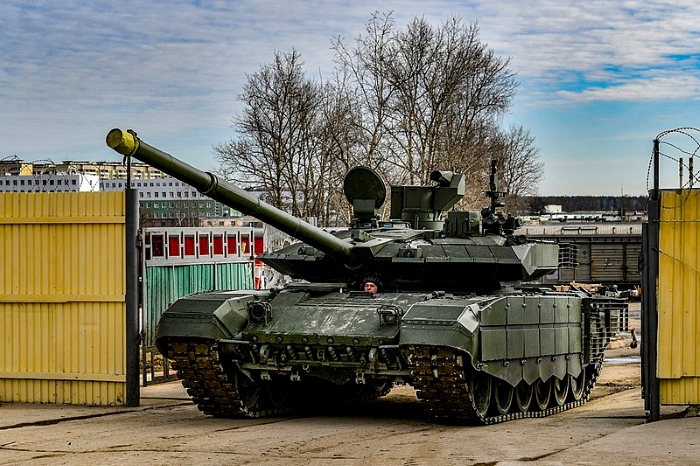
 www.israeldefense.co.il
www.israeldefense.co.il

Russian Army to receive over 400 armored vehicles this year
The Russian Defense Ministry announced this week that units of the country's Army will receive more than 400 armored vehicles in 2021. The Army will get T-72B3M, T-80BVM and T-90M tanks, BMP-3 infantry fighting vehicles (IFVs), upgraded BMP-2M IFVs with the Berezhok combat module, and BTR-82A...
 www.israeldefense.co.il
www.israeldefense.co.il
Lol....they're like "can't wait for my tour in this hell hole to come to an end "

K17 Boomerang APC
Russia’s state-run Rostec has chosen Aero India-2021 show as the first international event to display its K-16 and K-17 Boomerang armored personnel vehicles (APC).
Boomerang 8×8 VPK 7829 combat vehicle was developed by Russia’s VPK company in two configurations: 25-ton K17 Armored Fighting Vehicle (AFV) and 22-ton amphibious APC designated K-16. Intended to replace heeled combat vehicles such as the BTR80, Boomerang represents a new approach in all aspects – a new chassis, more ground clearance, and significantly higher vehicle, new armor, and new armament.
Boomerang has an operating range of 800 km. It is powered by a new, 750 HP digitally controlled diesel engine developed by the Yaroslavl Engine Plant. It is coupled to an automatic transmission. It has a road speed of 100 km/h and 50 km/h offroad. On amphibious operation, the Boomerang can swim at a speed of 10 km/h.
Each vehicle is manned by a crew of three – a commander, gunner, and driver. It can carry eight troops with their combat loads.
Unlike the side access doors used on the BTR 80, the Boomerang uses a rear access ramp, similar to western and BMP-type Russian APCs. Access hatches are also available on the top. Both versions use passive protection comprising a combination of steel and composite/ceramic armor. Laser detectors and instant multi-spectral smoke dischargers offer a form of ‘soft’ active protection, enabling the vehicle to maneuver under the smoke cover to avoid the hit. Multiple video cameras are mounted around the vehicle providing a 360-degree vision for the crew.
The K-16 APC is armed with a combat module with a large-caliber (12.7-mm) machine gun while K-17 BMP is equipped with an Epoch combat module equipped with a 30-mm autocannon and a coaxial rifle (7.62-mm) machine gun as well as “Kornet” anti-tank missiles. The K-17 can also be equipped with the Afganit hard Kill countermeasures that utilizes radars to detect the threat, and launches blast-fragmenting countermeasures to intercept anti-tank missiles, anti-tank projectiles (including kinetic) and rockets at ranges of 4-200 meters from the vehicle.

MOSCOW, February 4. /TASS/. Russia’s Military-Industrial Company (VPK) will develop a new multipurpose car, based on the Strela armored vehicle, for the Ministry of Defense, VPK CEO Alexander Krasovitsky told TASS Thursday.
"The Strela car line is being developed in compliance with the Defense Ministry research and development work. Currently, the line includes six vehicles, two of which - a base armored car and an amphibious armored car - are ready. The series will also include a multipurpose non-armored car, making it possible to update the park of universal off-road vehicles of the Russian Army," Krasovitsky said.
According to the official, the Strela family will also include a light buggy for special operations forces, as well as armored and unarmored chassis for deployment of various weapons and systems.
He disclosed that Strela is cheaper than the Tigr armored vehicle due to use of commercial parts.
"Due to wide use of parts from commercial cars, the Strela vehicles could be services and repaired at the vast car service station network," Krasovitsky added.
He disclosed that VPK developed the Strela base car in 1.5 months under the company’s own initiative.
The vehicle family was first presented at the Army 2020 military forum in the Moscow Region’s Kubinka.

Russian company develops Strela multipurpose car family for Armed Forces
Currently, the line includes six vehicles, two of which - a base armored car and an amphibious armored car - are ready, the company said
The Russian military received the new batch of T-90M Proryv-3 (Breakthrough) main battle tank, according to a recent Uralvagonzavod news release.
According to Russian tank manufacturer Uralvagonzavod, Army has taken delivery of the advanced version of the T-90 main battle tank.
“Uralvagonzavod has dispatched a batch of T-90M ‘Proryv’ tanks to the customer,” the press office said.
The T-90M tank considerably surpasses its T-90 predecessor by its combat efficiency while keeping such advantages of the previous model as exceptional reliability and the minimum amount of maintenance in its operation.
The new tank will likely feature many of the technologies developed for Russia’s revolutionary T-14 Armata.
The T-90M tank is outfitted with a new turret with a powerful 125m cannon that allows using new highly powerful munitions and also missiles that can strike enemy tanks at a distance of up to 5 km.




 defence-blog.com
defence-blog.com
According to Russian tank manufacturer Uralvagonzavod, Army has taken delivery of the advanced version of the T-90 main battle tank.
“Uralvagonzavod has dispatched a batch of T-90M ‘Proryv’ tanks to the customer,” the press office said.
The T-90M tank considerably surpasses its T-90 predecessor by its combat efficiency while keeping such advantages of the previous model as exceptional reliability and the minimum amount of maintenance in its operation.
The new tank will likely feature many of the technologies developed for Russia’s revolutionary T-14 Armata.
The T-90M tank is outfitted with a new turret with a powerful 125m cannon that allows using new highly powerful munitions and also missiles that can strike enemy tanks at a distance of up to 5 km.




Russian Army receives new batch of upgraded T-90M tanks
The Russian military received the new batch of T-90M Proryv-3 (Breakthrough) main battle tank, according to a recent Uralvagonzavod news release. According to Russian tank manufacturer Uralvagonzavod, Army has taken delivery of the advanced version of the T-90 main battle tank. “Uralvagonzavod...

Photo by Alexey Khlopotov
Russia is developing an advanced version of its secret main battle tank with a new turret and gun under the Burlak program, according to military expert Alexey Khlopotov.
There was little in the way of updates on this project until last Wednesday when alleged photos of the Burlak tank with a modified turret surfaced on social media.
The Burlak program, which began in 2005, was aimed to replace Soviet-era main battle tanks with a common design by 2025. But due to financial problems, the project was frozen indefinitely.
The program covered develop a unified new two-man combat turret, usable on T-72, T-80 and T-90 series.
According to open-source, Burlak’s autoloader equipped with a dual feed system, one an existing T-72 series autoloader in the hull and another turret bustle autoloader capable to accommodate armor-piercing, fin-stabilized, discarding-sabot (APFSDS) ammunition with the much-elongated core. This was technically not a new concept – the same solution had been previously used in the Object 640 demonstrator. It allowed switching between shell types quite fast thanks a special two-round storage system.
A visual feature of the new project was the design of the tank turret is considerably longer with a long rear protrusion housing the ammunition.
Another interesting element was the interesting explosive reactive armour (ERA) design, placed in an opposite to the usual Russian designs such as the Kontakt-5. The ERA panels protrude outward from the turret from bottom to top rather than from top to bottom, creating a very distinctive look that’s difficult to mistake for any other design. The ERA installed was a system called Kaktus, or some further development thereof.
It is worth noting that the appearance of the tank turret has undergone a number of changes, which suggests that the Burlak program has received a new development.

Russian secret Burlak tank allegedly leaks via social media
Russia is developing an advanced version of its secret main battle tank with a new turret and gun under the Burlak program, according to military expert Alexey Khlopotov. There was little in the way of updates on this project until last Wednesday when alleged photos of the Burlak tank with a...













